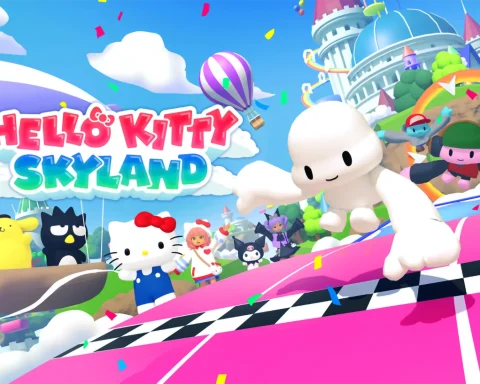 At heart, Papo and Yo is a seamless environmental puzzle. A minimalistic gameplay style allows to Quico to run, jump and flips switches with the smallest of effort from the player. While the puzzling gameplay is fun enough, it’s the sense of childlike wonder in Quico’s world that sets it apart. His toy robot rides upon his back giving him an extra boost jump with its jetpacks, as well as darting off to distant switches outside of his reach with a simple button press. While flipping switches might be old news in gaming, when you find buildings scurrying off to new destinations on little chalk legs and growing wings to fly themselves upon each other to construct a tower that puts the Leaning Tower of Pisa to shame, you’ll want to keep flipping them to see the magic they harbour.
At heart, Papo and Yo is a seamless environmental puzzle. A minimalistic gameplay style allows to Quico to run, jump and flips switches with the smallest of effort from the player. While the puzzling gameplay is fun enough, it’s the sense of childlike wonder in Quico’s world that sets it apart. His toy robot rides upon his back giving him an extra boost jump with its jetpacks, as well as darting off to distant switches outside of his reach with a simple button press. While flipping switches might be old news in gaming, when you find buildings scurrying off to new destinations on little chalk legs and growing wings to fly themselves upon each other to construct a tower that puts the Leaning Tower of Pisa to shame, you’ll want to keep flipping them to see the magic they harbour. Latest Articles
WiZmans World Re;Try, an HD remaster of a tactical RPG, was released in Japan for PlayStation…
Thirdverse has announced that free-to-play social virtual reality game Hello Kitty Skyland is right on track…
Werewolf game-style social deduction adventure game Yokai Landlord: Monster Mystery! puts players in the shoes of…
I don’t often write about films these days, but I recently saw something at the Japan…
The Pokémon Company had revealed another new Mega Evolution from Pokémon Legends: Z-A‘s upcoming DLC, Mega…









Excellent review. I can see why you were so excited about it, and I sincerely hope to be able to play this wonderful game in the future.
Thanks man! I've played my share of "touching" games in my time, but Papo and Yo pushed far beyond those I've played because it's so deeply personal. It's a game that'll I've never forget, and that's really saying something. 🙂